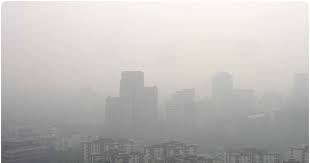
A new report from the Centre for Science and Environment (CSE) challenges the prevailing narrative surrounding Delhi’s toxic air quality. While stubble burning remains a contributing factor, the report emphasizes that local sources, particularly vehicle emissions, play a more significant role in the city’s deteriorating air quality.
The CSE report, presented by Anumita Roychowdhury, the executive director of the organization, highlights that PM2.5 levels in Delhi-NCR witnessed a staggering and unprecedented increase of 68 percent in just 24 hours on November 2. This spike occurred at a time when the share of stubble burning in Delhi’s PM2.5 levels had gradually declined, ranging from 25 to 35 percent, lower than previous years.
Anumita Roychowdhury explained, “Absolutely. That means the bulk of pollution coming is from local sources. If we do not pay attention to this fact and keep our focus on one reason, we are not going to find a solution to the problem.”
The CSE’s Urban Lab analysis identifies key factors contributing to Delhi’s toxic air quality. Over the past five years, PM2.5 levels have been steadily rising, starting from the middle of September this year, indicating a shift in the pattern. The percentage share of PM2.5 in PM10 has exceeded 50 percent, indicating a higher impact from combustion sources such as vehicles, industry, and open burning.
While stubble burning remains a concern, the report suggests that it is not the sole culprit for the alarming increase in pollution levels. According to Ms. Roychowdhury, “Among the internal sources of pollution, the vehicles contribute up to 50 to 60 percent to Delhi’s pollution levels.”
The CSE’s report calls for immediate action to address policy gaps and implement measures to reduce emissions from various sectors, including vehicles, industry, power plants, waste burning, construction, and dust sources. Transformative changes in infrastructure and systems are needed to achieve clean air targets in the region.
The burning of crop residue in north India has long been blamed for the worsening air quality in Delhi during the winter months. The issue has also become politically sensitive, with states engaging in blame-shifting. In response, the Supreme Court has urged state governments to take immediate steps to curb stubble burning, emphasizing the need for swift action to combat episodic pollution factors.
The CSE, a prominent public interest research and advocacy organization based in Delhi, underscores the urgency of addressing local sources of pollution and implementing comprehensive measures to mitigate the air quality crisis in the region.
Sources By Agencies




